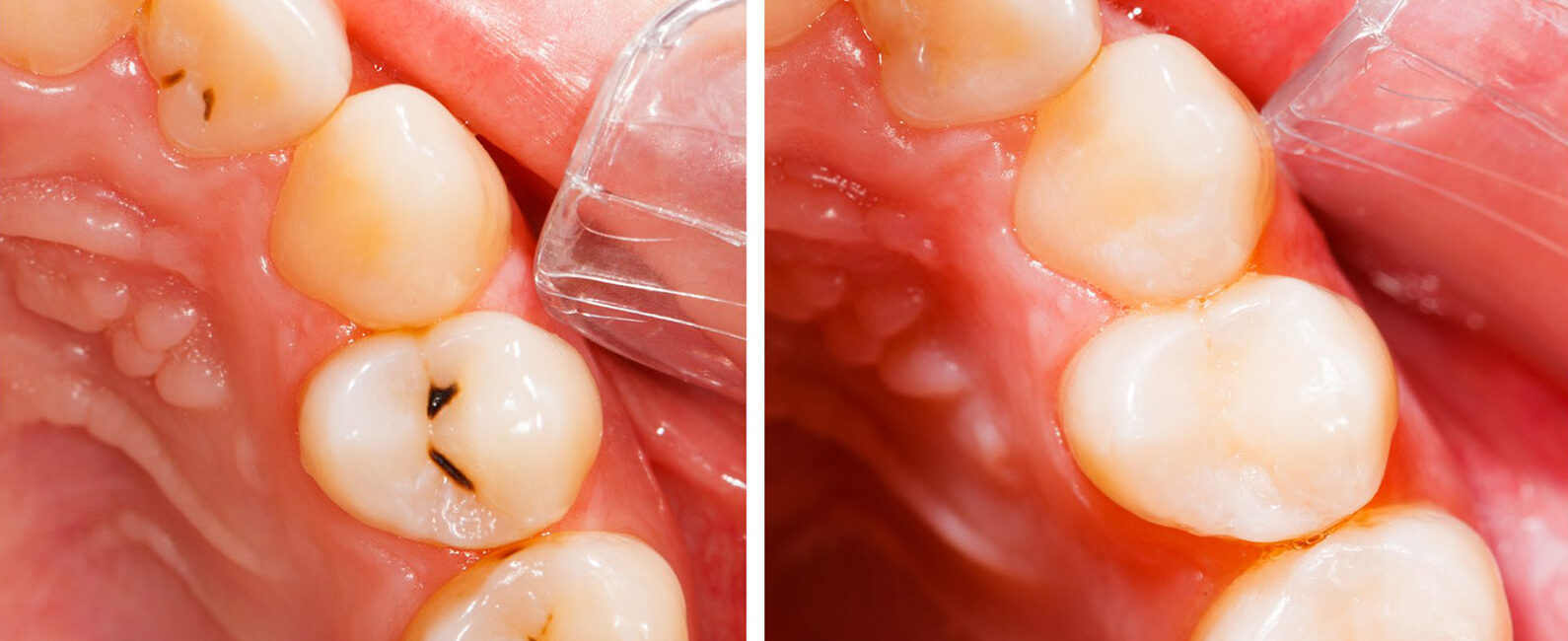
When it comes to modern dentistry, there are many different options available depending on your specific needs, from bonding tooth enamel to orthodontic braces and from tooth whitening to dental implants. One of the latest advances in dentistry has been the introduction of new materials used to fill cavities left behind by decayed teeth before extraction or in preparation for crowns, bridgework, or other treatments you may need in the future.
1. Resin Infiltration
A new technology in the dental world, resin infiltration is an advanced technique that provides an excellent solution for filling cavities between teeth. Previously, dentists often removed some enamel before filling the hole with amalgam, a mixture of mercury, silver, tin, and copper. However, this process can be harrowing and often leaves unsightly black spots on the tooth. Resin infiltration works by injecting resin into the space between teeth, where it chemically bonds to dentin and tooth enamel to fill any gaps.
The technique is painless and hence no need for anesthesia. Furthermore, resins for filling cavities provide more aesthetic benefits because they are less visible throughout your smile. Additionally, this technique does not require any drilling as with amalgam. Finally, as opposed to other materials used in traditional dentistry that become brittle over time and eventually break down, resins will not shrink or deteriorate as amalgams do, so they will provide a long-lasting fix without requiring future visits to your dentist! For example, this recently-opened dentist in Melton, Australia uses new dental filling materials, such as resin infiltration techniques, to provide safe, natural, and lasting solutions.
2. Stem Cell Regeneration
In recent years, dentists have heralded stem cell regeneration as the next frontier in dental fillings. Stem cells are pluripotent cells found in human tissue that can produce all cell types, including muscle, bone, and nerve cells. These cells have shown promise for various medical applications, but their use in dentistry has garnered the most attention.
The technology involves inserting a small biodegradable sponge made from amorphous calcium phosphate or hydroxyapatite (a mineral with similar properties to calcium) into the tooth. Over time, this sponge will degrade and be replaced by living tissue generated from your stem cells, regenerating your tooth’s natural form. With several promising case studies and endless potential benefits, these revolutionary treatments look set to take over modern dentistry in years to come.
3. Bio-Active Glass Composites
Traditional dental fillings contain mercury, silver, lead, and copper. These materials can cause several complications, including poisoning and other autoimmune reactions. Dental fillings made from bioactive glass composites strengthen teeth and simultaneously fill cavities with a material that is non-toxic to the body. The bioactive glass replenishes your teeth with the minerals to stay healthy and strong.
The new composite can prevent the infiltration of bacteria into the tooth by blocking off the empty spaces where bacteria could grow or hide with minerals. Bioactive Glass Composites create a shield around the tooth, strengthening it and protecting it against any future wear or damage. Dental fillings made from this material are durable and safe. It also creates an alkaline environment which deters bacterial growth.
As such, dentists can improve their revenue by adopting next year’s trends, such as bioactive glass composites, which combine the wisdom of past generations with modern techniques and technologies. The technology has elevated modern dentistry to a level of excellence that will make dental patients feel like royalty for years to come.
4. Long Lasting Adhesive + Composite Dental Fillings
A new era of modern dentistry is now upon us. Combining a new adhesive and composite fillings creates a long-lasting dental restoration. Today’s patients can benefit from this technology because these fillings last longer than traditional amalgam or porcelain fillings, for example. The amalgam fillings may form cracks and gaps, creating a conducive environment for bacteria to cause further damage.
The combination of the composite and a solid and safe adhesive forms a dental filling that is resistant to damage and decay for longer than the standard amalgam fillings! Because of their longevity, these restorations will save patients money in the long run!
5. BioMin F Toothpaste
A revolutionary toothpaste containing BioMin F ingredients is helping rebuild your natural minerals and teeth as you rest. It works to neutralize the acidity that can lead to cavities. The component in the toothpaste provides a natural way to remineralize teeth, leaving you with whiter teeth and a healthier mouth.
The new BioMin F toothpaste releases calcium, phosphates, and fluoride ions into your saliva, which help prevent decay-causing bacteria from forming on surfaces of the tooth’s enamel. Your dentist might recommend this product to get ahead on dental health and make sure you resolve any problems before they start! The BioMin F toothpaste, through a slow release of these minerals, helps rebuild, strengthen, and protect your natural teeth.
Conclusion
Composite dental fillings are a necessary part of modern dentistry and comprise new materials and technologies that improve the health and well-being of patients. With modern dental solutions such as resin infiltration, stem regeneration, and composite alternatives, you’ll have access to these newer fillings that maintain their original shape and colour over time. And for those teeth where there’s no space for an amalgam filling, resin infiltration can eliminate those cavities between teeth. These modern dentistry fillings and materials will make you look and feel the fest and last longer.


